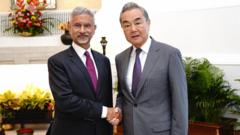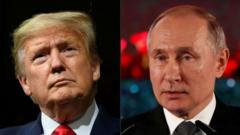The article examines recent currency fluctuations, the effects of President Trump's policies on trade negotiations, and China's advancements in clean energy.
**The U.S. Dollar's Troubling Decline: Political and Economic Impacts**

**The U.S. Dollar's Troubling Decline: Political and Economic Impacts**
An overview of the U.S. dollar's significant drop amidst escalating tariffs and shifting trade policies.
The U.S. dollar has experienced a precipitous decline of over 10 percent in the past six months, marking its most challenging start to the year since 1973. This downturn is attributed to a confluence of factors, including President Trump's aggressive tariff strategies, a more isolationist foreign policy, rampant inflation, and spiraling government debt. Despite a slight easing of tariff tensions and a rebound in the U.S. stock and bond markets, the oil of the dollar's value has continued to depreciate.
Economist Steve Englander remarked, “It’s not about whether the dollar is weak or strong; it’s a reflection of global perceptions regarding U.S. policy.” The ramifications of Trump’s impending tariffs, scheduled to commence on July 9, are also affecting ongoing international trade discussions. Countries are racing to finalize deals, although the process is hampered by the looming threat of additional tariffs.
In response, Canada has initiated efforts to dismantle internal trade barriers effective immediately. However, many analysts contend that these measures cannot compensate for the anticipated reduction in trade with the United States. Simultaneously, U.S. and E.U. negotiators are working tirelessly to finalize a trade agreement by the deadline, which may result in only a preliminary framework by July 9.
On another front, while China remains the world's leader in climate emissions—greater than those of the U.S. and Europe combined—it is steadily transitioning towards renewable energy with remarkable speed. These developments not only showcase China's ambitions on the global stage but also highlight potential challenges for U.S. economic dominance in the forthcoming years.
















